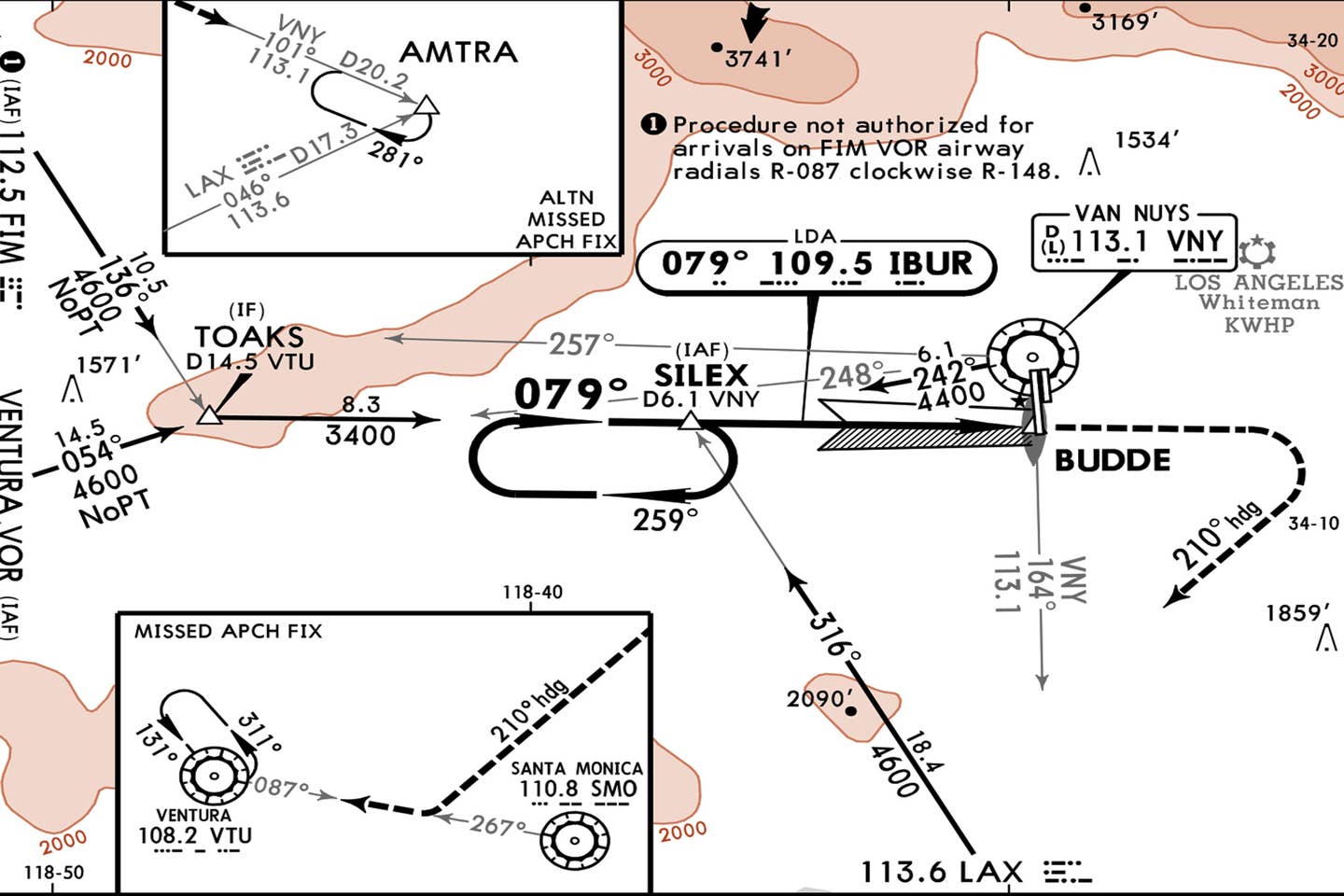
Van Nuys LDA-C Flying
Traditionally, the purpose of an instrument approach is to stabilize the pilot and the aircraft, lined up with the runway and in just the right position from which to land. Well, not in this case.
The localizer directional aid approach, also commonly called the “localizer darn angle” approach, lines the aircraft up to the airport itself—using localizer lateral accuracy no less—but not necessarily with a particular runway. Many pilots have never flown an LDA approach, but they are more common than many may realize. They still exist in places where terrain and potential traffic may conflict, and in urban areas where the community may not enjoy listening to large numbers of airplanes as they overfly residential areas.
The VNY LDA-C we’re digging into this month offers many interesting and illustrative points about LDA approaches, many of which are applicable to other approaches too.
A. Not Aligned With a Landing Runway
While approaches aiming the aircraft at somewhat odd angles are not all that unusual, the Van Nuys LDA-C is an extreme example that sets the pilot up for a nearly 90-degree turn in order to land. That’s the reason the approach includes only circling minimums. How low an aircraft is legally able to descend is, of course, determined by the category into which the aircraft falls, which is determined by the aircraft’s approach speed. An aircraft flying an approach speed of 120 knots would use an MDA of 1,500 feet. A large jet would need the weather to be essentially VFR in order to use this procedure.
B. Unusual Missed Approach Point
The missed approach point on this approach is an old-school middle marker, BUDDE—a piece of ground-based navigation gear that may seem strange to many newly minted instrument pilots. The circle-to-land maneuver can be attempted then if the runway environment is seen prior to BUDDE. Note there is no time or DME listed as a backup to using the MM as the missed approach point, although there is a cross radial from the VNY VOR for help. Remember too, there’s no vertical guidance even though the LDA is essentially a localizer-type signal for lateral guidance. Using this procedure means the pilot descends after crossing SILEX and simply waits to either see the runway or hear the MM signal indicating the MAP.
C. Disregard Any Glideslope Indications
Even though this LDA procedure includes only lateral guidance from the localizer, there’s an easy-to-miss note warning pilots that just in case they do see a glideslope signal at times, they are to ignore it. That signal is not being generated for this approach and is not safe to follow down to the ground.
D. Two Tower Frequencies
Larger, busier airports often use multiple control-tower frequencies to avoid too much traffic on a single frequency overwhelming the tower controller. The question for some pilots is which one to choose; the choice at VNY is based upon the landing runway. Pilots planning to land on Runway 16R could plan ahead and pre-load 119.3 into their comm box, while traffic planning for the short Runway 16L would expect to call the tower on 120.2 once they’re instructed to call the tower by SOCAL approach. Sure, approach control will normally give the pilot the proper frequency at the correct point in the approach, but planning by a savvy pilot reduces the workload one more notch.
E. The Missed Approach is Complicated
The VNY LDA-C missed approach involves multiple steps and begins with a climb straight ahead, essentially eastbound to 1,900 feet, followed by a right turn to a 210-degree heading as the aircraft continues the climb to 4,600 feet. From there, the pilot intercepts the 267-degree radial from the Santa Monica VOR. This requires a turn to roughly 267 degrees—depending on the wind—until reaching the Ventura VOR, where the pilot would enter the published hold. ATC could, of course, issue alternate missed approach instructions. One item to remember is the pilot is not allowed to skip any intermediate steps when executing the published missed, so don’t try flying GPS direct to VTU unless you’ve requested and ATC has approved such a turn.

Sign-up for newsletters & special offers!
Get the latest FLYING stories & special offers delivered directly to your inbox






